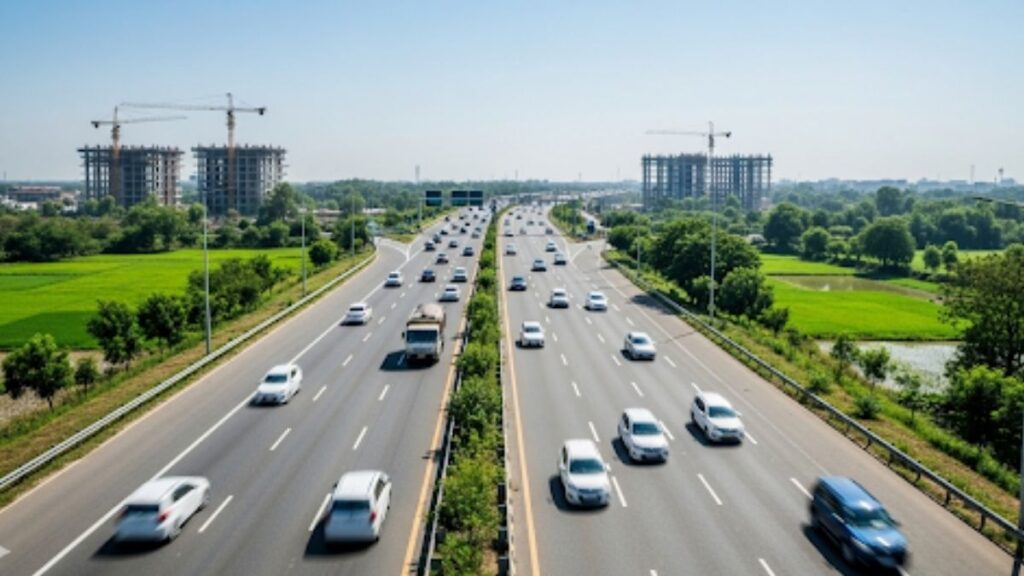India is set to witness a historic transformation in its transport infrastructure as the government has announced an ambitious $125 billion plan for a high-speed road network. The project, which aims to reshape national connectivity by 2035, is expected to enhance trade, reduce travel time, create millions of jobs, and accelerate the country’s journey toward becoming a global economic powerhouse.
A Bold Step Toward Infrastructure Revolution
The announcement reflects India’s determination to match its rapid economic growth with equally advanced infrastructure. With the nation’s GDP projected to grow steadily over the next decade, building high-speed roadways will serve as a backbone for industrial expansion, urban development, and logistics efficiency.
The $125 billion investment marks one of the largest-ever infrastructure pushes in India’s history, signaling a clear focus on next-generation highways and expressways designed to handle high volumes of traffic and improve safety standards.
What the High-Speed Road Network Means for India
The planned network will connect major industrial hubs, cities, ports, and border regions, significantly reducing travel time for both goods and people. It will be designed on par with global benchmarks, featuring multi-lane expressways, intelligent traffic management systems, and eco-friendly construction methods.
Some key objectives of the project include:
- Reduced Travel Time: Long-distance journeys that currently take 10–12 hours are expected to be cut down to 4–6 hours.
- Boosting Logistics: Faster freight movement will help industries such as e-commerce, manufacturing, and agriculture.
- Safety Upgrades: Smart surveillance, better road engineering, and quick emergency response systems will improve road safety.
- Green Infrastructure: Solar-powered lighting, waste management, and eco-friendly materials will minimize environmental impact.
Economic Impact: Driving Growth and Jobs
A project of this scale is more than just a transport initiative—it’s an economic game changer. The government expects the high-speed road network to directly and indirectly create millions of jobs across construction, engineering, logistics, and tourism sectors.
Additionally, the enhanced connectivity is likely to:
- Lower logistics costs for businesses, making exports more competitive.
- Encourage regional industrial growth by connecting Tier-2 and Tier-3 cities.
- Strengthen supply chains, ensuring smoother movement of goods from farms and factories to markets.
- Attract foreign investments into industrial corridors aligned with the road network.
Supporting India’s Global Ambitions

As India strives to achieve its vision of becoming a $10 trillion economy by 2035, infrastructure remains the foundation for growth. The high-speed road network will complement other flagship initiatives such as:
- Dedicated Freight Corridors (DFC)
- Bharatmala Pariyojana (highway development program)
- Make in India (boosting domestic manufacturing)
- Digital India (supporting smart traffic systems and toll automation)
Together, these initiatives are designed to position India as a global hub for trade and innovation.
Challenges on the Road Ahead
While the announcement has generated widespread excitement, implementing such a massive project comes with challenges:
- Land Acquisition Issues – Acquiring large tracts of land for highways has historically been slow and contested.
- Environmental Concerns – Balancing development with sustainability will require careful planning and eco-friendly practices.
- Funding and Execution – Ensuring transparency in allocation, preventing delays, and securing private investment are crucial.
- Maintenance Costs – Once completed, maintaining high-speed expressways will demand consistent investment.
The government has assured stakeholders that these issues will be addressed through public-private partnerships (PPP models), innovative financing, and advanced project management systems.
Benefits Beyond Roads
The $125 billion high-speed road project isn’t just about connecting cities—it’s about connecting people and opportunities. Beyond economic growth, the network is expected to:
- Improve tourism prospects, making destinations more accessible.
- Enable faster emergency response during disasters.
- Support regional equality, allowing remote areas to enjoy development benefits.
- Enhance urban-rural integration, giving farmers quicker access to markets.
For ordinary citizens, the biggest advantage will be smoother, faster, and safer travel experiences, transforming daily commutes and long journeys alike.
Global Comparisons: Learning from Leaders
India’s ambitious road plan draws inspiration from successful models across the world. Countries like China, Japan, and the United States have demonstrated how high-speed highways and expressways can fuel rapid growth.
- China’s Expressways helped link industrial hubs with ports, making it the world’s factory.
- Japan’s Shuto Expressway Network played a vital role in supporting Tokyo’s urban economy.
- The U.S. Interstate Highway System remains one of the largest contributors to the country’s long-term growth.
By adopting global best practices while tailoring them to India’s unique needs, the nation aims to build a road system that will last generations.
Roadmap to 2035
According to initial plans, the high-speed road network will be rolled out in phases:
- Phase 1 (2025–2030): Priority expressways connecting industrial corridors, ports, and metro cities.
- Phase 2 (2030–2035): Expansion to Tier-2 and Tier-3 cities, border areas, and tourism hubs.
- Beyond 2035: Integration with smart mobility solutions such as autonomous vehicles and AI-driven traffic systems.
Conclusion: A Road to Prosperity
The unveiling of India’s $125 billion high-speed road network plan is a landmark moment in the country’s development journey. More than a transport project, it symbolizes India’s determination to build a future-ready economy where connectivity fuels growth, sustainability, and equality.
If executed with vision and efficiency, this project will not only revolutionize travel but also redefine India’s economic landscape—paving the way for a Viksit Bharat (Developed India) by 2047.

